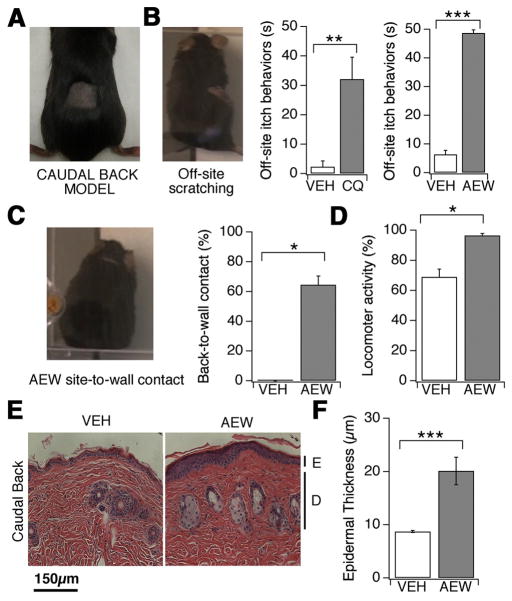Figure 2.
AEW caudal back model of dry skin pruritus induces off-site scratching, epidermal thickening, and increased locomotor activity. A, Photo displaying the area of treatment in the caudal back model of itch. This assay produces dry skin, but the inaccessible location prevents scratching, wiping, or biting of the treated area. B, Image displaying location of off-site scratching after treatment to the caudal back. Off-site scratching was observed in response to both acute subcutaneous injection of chloroquine (CQ) and chronic (5 d) AEW treatment to the caudal back. AEW-evoked scratching behaviors were recorded on day five of treatment. After both treatments, the total time spent scratching or biting was quantified for 20 min. Application of vehicle (VEH, water) failed to elicit scratching or biting toward any site. C, Image displaying AEW site-to-wall contact behavior. Site-to-wall behaviors were observed on day five of treatment. The total time spent in a back-to-wall configuration was quantified for 20 min. Application of VEH failed to elicit back-to-wall contact. D, AEW-treated mice display a significant increase in locomotor activity in which they move and frequently attempt to contact the caudal back to the chamber wall. The percentage of time spent moving was quantified for 20 min. E, H&E-stained caudal back skin sections from mice treated for 5 d with AEW or VEH on the caudal back (VEH; water; left). E indicates epidermis; D, dermis. F, Thickness of nucleated epidermal layers was quantified from AEW-treated and VEH-treated skin. All error bars represent SEM (n ≥ 6 mice/group, ***p < 0.001, one-way ANOVA).

